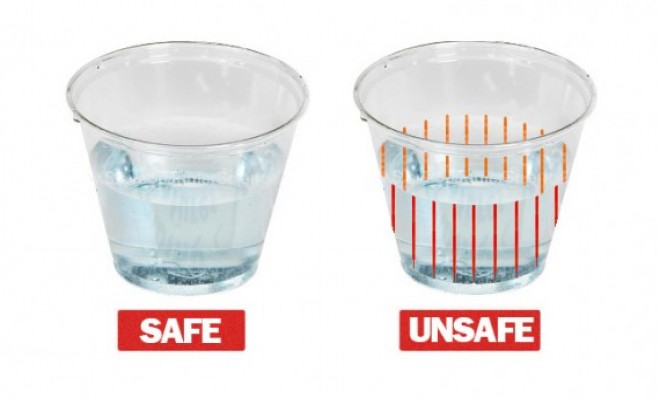The cup that changes color when date-rape drugs are present
A startup company is developing a material that can detect date-rape drugs and discreetly alert a drinker


Every year, an estimated 1 million people are date raped, and many of them are victims of date-rape drugs, potent mixtures that disrupt the central nervous system. These drugs, often slipped into alcoholic beverages, can cause drowsiness, amnesia, and blackouts, and they're incredibly difficult to detect. But one startup wants to change that. The company, DrinkSavvy, is creating drinkware that changes color when date-rape drugs are present, going from clear to red. Mike Abramson, DrinkSavvy's founder, was inspired to create the cups after he himself was drugged. "I was thinking that I needed to develop something that was discreet, effortless, and continuous," he says. The startup also wants to create straws and other kinds of drinking apparatuses that can help with detection.
While Abramson's initiative is certainly admirable, you probably won't see these cups in your local pub anytime soon. So far, DrinkSavvy has reached just $19,000 of its $50,000 goal on fundraising site Indiegogo.com. And other questions about the product remain: Just how discreet will this color-changing be? Will the cups be able to detect the many different kinds of drugs? "I worry that creepy kitchen chemists will evolve to create new drugs that can't be detected by this technology," says Laura Beck at Jezebel. "Here's hoping 'She didn't use a color-changing straw' doesn't become the new 'Did you see how she was dressed?' argument."
A free daily email with the biggest news stories of the day – and the best features from TheWeek.com
The Week
Escape your echo chamber. Get the facts behind the news, plus analysis from multiple perspectives.

Sign up for The Week's Free Newsletters
From our morning news briefing to a weekly Good News Newsletter, get the best of The Week delivered directly to your inbox.
From our morning news briefing to a weekly Good News Newsletter, get the best of The Week delivered directly to your inbox.
Jessica Hullinger is a writer and former deputy editor of The Week Digital. Originally from the American Midwest, she completed a degree in journalism at Indiana University Bloomington before relocating to New York City, where she pursued a career in media. After joining The Week as an intern in 2010, she served as the title’s audience development manager, senior editor and deputy editor, as well as a regular guest on “The Week Unwrapped” podcast. Her writing has featured in other publications including Popular Science, Fast Company, Fortune, and Self magazine, and she loves covering science and climate-related issues.
-
 Political cartoons for January 4
Political cartoons for January 4Cartoons Sunday's political cartoons include a resolution to learn a new language, and new names in Hades and on battleships
-
 The ultimate films of 2025 by genre
The ultimate films of 2025 by genreThe Week Recommends From comedies to thrillers, documentaries to animations, 2025 featured some unforgettable film moments
-
 Political cartoons for January 3
Political cartoons for January 3Cartoons Saturday's political cartoons include citizen journalists, self-reflective AI, and Donald Trump's transparency
